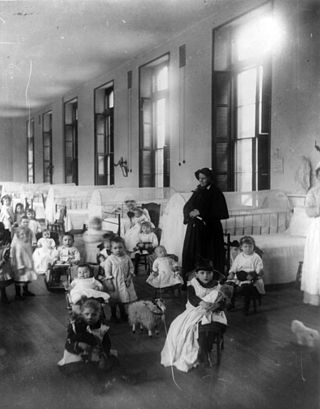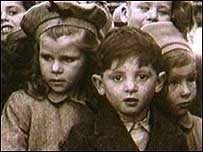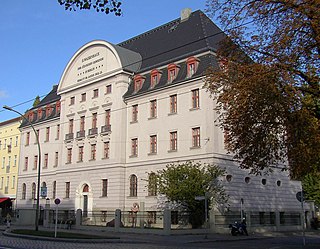Related Research Articles

Adoption is a process whereby a person assumes the parenting of another, usually a child, from that person's biological or legal parent or parents. Legal adoptions permanently transfer all rights and responsibilities, along with filiation, from the biological parents to the adoptive parents.

An orphanage is a residential institution, total institution or group home, devoted to the care of orphans and children who, for various reasons, cannot be cared for by their biological families. The parents may be deceased, absent, or abusive. There may be substance abuse or mental illness in the biological home, or the parent may simply be unwilling to care for the child. The legal responsibility for the support of abandoned children differs from country to country, and within countries. Government-run orphanages have been phased out in most developed countries during the latter half of the 20th century but continue to operate in many other regions internationally. It is now generally accepted that orphanages are detrimental to the emotional wellbeing of children, and government support goes instead towards supporting the family unit.

Foster care is a system in which a minor has been placed into a ward, group home, or private home of a state-certified caregiver, referred to as a "foster parent", or with a family member approved by the state. The placement of a "foster child" is normally arranged through the government or a social service agency. The institution, group home, or foster parent is compensated for expenses unless with a family member. In some states, relative or "Kinship" caregivers of children who are wards of the state are provided with a financial stipend.
The international adoption of South Korean children was at first started as a result of a large number of orphaned mixed children from the Korean War after 1953, but later included orphaned Korean children. Religious organizations in the United States, Australia, and many Western European nations slowly developed into the apparatus that sustained international adoption as a socially integrated system. This system, however, is essentially gone as of 2020. The number of children given for adoption is lower than in comparable OECD countries of a similar size, the majority of adoptees are adopted by South Korean families, and the number of international adoptees is at a historical low.

The Duplessis Orphans were a population of Canadian children wrongly certified as mentally ill by the provincial government of Quebec and confined to psychiatric institutions in the 1940s and 1950s. Many of these children were deliberately miscertified in order to acquire additional subsidies from the federal government. They are named for Maurice Duplessis, who served as Premier of Quebec for five non-consecutive terms between 1936 and 1959. The controversies associated with Duplessis, and particularly the corruption and abuse concerning the Duplessis orphans, have led to the popular historic conception of his term as Premier as La Grande Noirceur by its critics.

Beulah George "Georgia" Tann, was an American social worker and child trafficker who operated the Tennessee Children's Home Society, an adoption agency in Memphis, Tennessee. Tann used the unlicensed home as a front for her black market baby adoption scheme from the 1920s. Young children were kidnapped and then sold to wealthy families, abused, or—in some instances—murdered. A state investigation into numerous instances of adoption fraud led to the closure of the institution in 1950. Tann died of cancer before the investigation made its findings public. Tann's custom of placing children with influential members of society normalized adoption in the U.S., and many of her adoption policies have become standard practice.


The Orphan Train Movement was a supervised welfare program that transported children from crowded Eastern cities of the United States to foster homes located largely in rural areas of the Midwest. The orphan trains operated between 1854 and 1929, relocating from about 200,000 children. The co-founders of the Orphan Train movement claimed that these children were orphaned, abandoned, abused, or homeless, but this was not always true. They were mostly the children of new immigrants and the children of the poor and destitute families living in these cities. Criticisms of the program include ineffective screening of caretakers, insufficient follow-ups on placements, and that many children were used as strictly slave farm labor.
The Baby Scoop Era was a period in anglosphere history starting after the end of World War II and ending in the early 1970s, characterized by an increasing rate of pre-marital pregnancies over the preceding period, along with a higher rate of newborn adoption.

The Hebrew Orphan Asylum of New York (HOA) was a Jewish orphanage in New York City. It was founded in 1860 by the Hebrew Benevolent Society. It closed in 1941, after pedagogical research concluded that children thrive better in foster care or small group homes, rather than in large institutions. The successor organization is the JCCA, formerly called the Jewish Child Care Association.
Porter-Leath, formerly known as the Children's Bureau, is a non-profit organization based in Memphis, Tennessee that serves children and families in the area. Porter-Leath was founded in 1850 as an orphanage and has since grown to six program service areas. The agency retains the early nature of its mission by providing foster care and has also expanded to early childhood education.

Deinstitutionalisation is the process of reforming child care systems and closing down orphanages and children's institutions, finding new placements for children currently resident and setting up replacement services to support vulnerable families in non-institutional ways. It became common place in many developed countries in the post war period. It has been taking place in Eastern Europe since the fall of communism and is now encouraged by the EU for new entrants. It is also starting to take hold in Africa and Asia although often at individual institutions rather than statewide. New systems generally cost less than those they replace as many more children are kept within their own family. Although these goals have been made internationally, they are actively being working towards as reform and new reforms are put into practice slowly as is fit for each country.
Shreevatsa is a care centre for the family deprived children which is located in Pune, a city in Maharashtra a western Indian state. The centre offers its orphans for adoption. It is operated by "Society of Friends of Sassoon Hospitals", a charitable organisation associated with Sassoon Hospital, Pune. The centre was established on 6 October 1973, the day of Vijayadashami. 2574 of its orphans were legally adopted into families between 1974 and 2009.
David Meade is an American politician and a Republican member of the Kentucky House of Representatives representing District 80 since January 8, 2013. His legislative district includes Lincoln County and part of Pulaski County. Meade serves as Speaker pro tempore of the Kentucky House of Representatives, a constitutional office and the second-highest position in the 100-member legislative chamber.

The Central Children's Home of North Carolina, officially the Central Children's Home of North Carolina, Inc., and historically known as Grant Colored Asylum, was founded in Oxford, North Carolina, in 1883. The home is a residential group environment for children up to young adults.
The Memorial Foundation for Children is a charitable organization in Richmond, Virginia that has been operating since 1807. It was one of Virginia's first charitable institutions. While it originally had an orphanage associated with it, it divested of this in the 1970s and now is solely a grant-making institution.

The Colored Orphan Asylum was an institution in New York City, open from 1836 to 1946. It housed on average four hundred children annually and was mostly managed by women. Its first location was on Fifth Avenue between 42nd and 43rd Streets in Midtown Manhattan, a four-story building with two wings. It later moved to Upper Manhattan and then to Riverdale in the Bronx.

Lucy Goode Brooks was an American slave who was instrumental in the founding of the Friends' Asylum for Colored Orphans in Richmond, Virginia.
Rising Ground is a large human services organization in New York City, with approximately 1,600 employees supporting more than 25,000 children, adults, and family members annually. Founded in 1831 as the Leake and Watts Orphan House, Rising Ground focused on providing child welfare services for much of its existence. Currently, Rising Ground services include child welfare, juvenile justice services, services for people with developmental and intellectual disabilities, special education school programs, services for survivors of gender-based violence, early childhood services, and services for unaccompanied minor children, among others. The organization has approximately 50 programs located at about three dozen sites in New York City and Westchester County, New York. In April 2018, the organization changed its name from Leake and Watts to Rising Ground.
Elizabeth Jaquelin Ambler Brent Carrington also known as Betsy Ambler Carrington founded the Female Humane Association in Richmond, Virginia. It is now known as the Memorial Foundation for Children. Believed to be the first of its kind in Virginia, the organization provided safety and shelter to destitute girls and kept they from a life of poverty and the possibility of becoming prostitutes to survive.
References
![]() This article incorporates text from this source, which is in the public domain : General Assembly of the State of Virginia's Acts and Joint Resolutions, Amending the Constitution, of the General Assembly of the State of Virginia (1872)
This article incorporates text from this source, which is in the public domain : General Assembly of the State of Virginia's Acts and Joint Resolutions, Amending the Constitution, of the General Assembly of the State of Virginia (1872)
- ↑ Rabinowitz 1994, p. 80.
- ↑ "Lucy Goode Brooks (1818–1900)". Virginia Foundation for the Humanities. Retrieved 3 December 2015.
- ↑ Kimball 2003, p. 259.
- ↑ General Assembly of the State of Virginia 1872, p. 454.
- ↑ "Charter and By-laws of the Friends' Asylum for Colored Orphans, in the City of Richmond, Va". Library of Virginia: Remaking Virginia: Transformation Through Emancipation. 1883. pp. 4–5. Retrieved 3 December 2015.
- 1 2 3 Knicely, Donna (December 18, 2000). "Friends Association For Children and Richmond Friends Meeting". Richmond, Virginia: Richmond Monthly Meeting of the Religious Society of Friends. Retrieved 10 April 2019.
- ↑ Mayor Richmond, VA 1902, p. 13.
- ↑ Virginia Department of Public Welfare 1915, p. 42.
- ↑ "Friends Association for Children". Richmond, Virginia: Better Business Bureau. September 2014. Retrieved 3 December 2015.